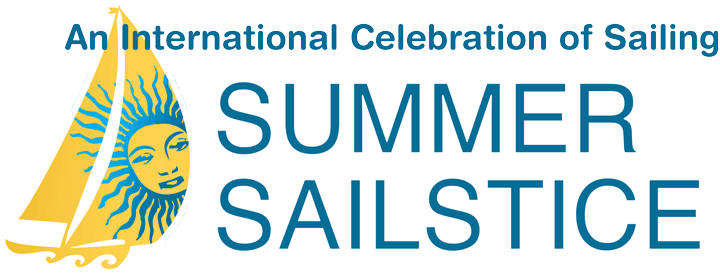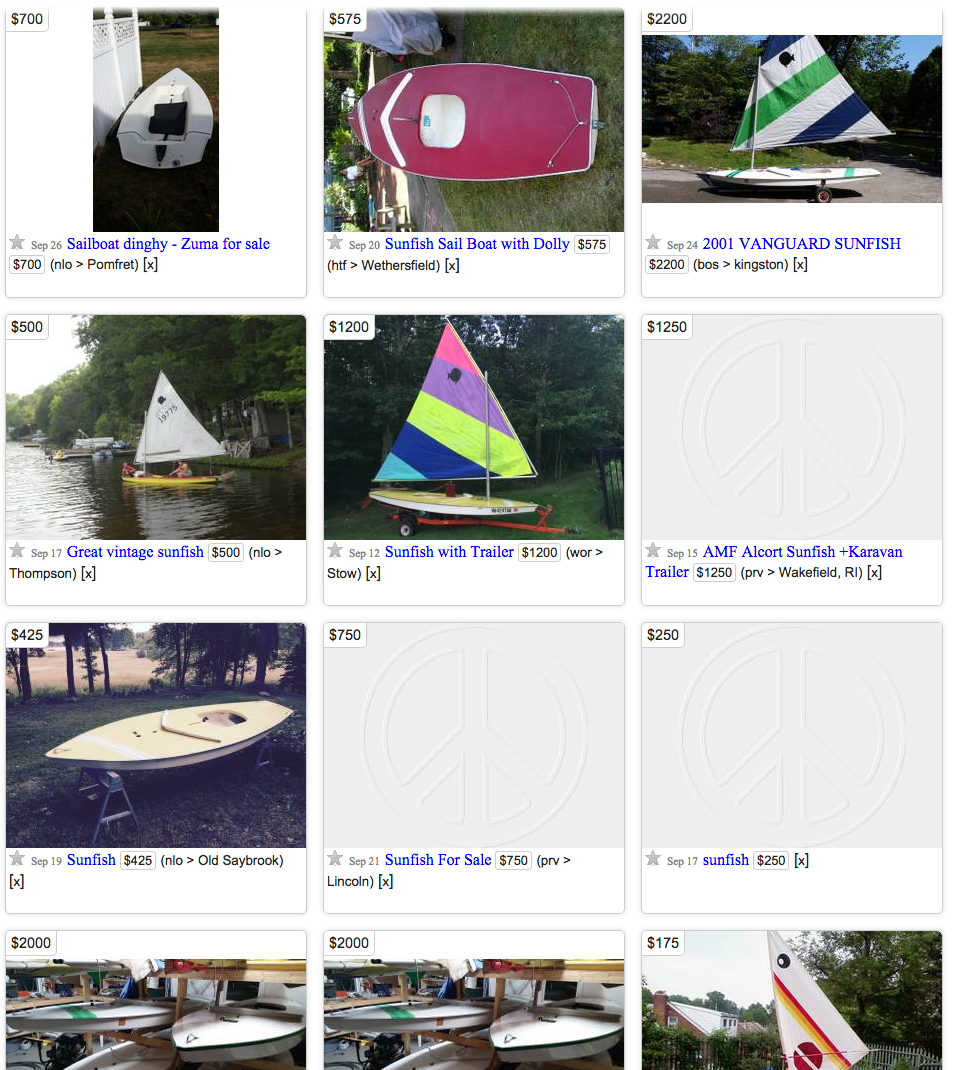
One perceived barrier to sailing, which Summer Sailstice aims to rectify, is the myth that sailing is expensive. Many will call us liars believeing that trying to remedy this myth is dishonest, since we all 'know' sailing actually is expensive. However, we think what's truly happened is that the marketing of sailing, like so many products, has skewed towards a target audience of the 1%. Unfortunately this has taken the wind out of the sails of what's still a truly affordable sport and pastime.
At a recent sailing conference with about 80 in attendance the audience was asked how they started sailing. Probably 60-70% said they started in a Sunfish or similar. Yet almost 100% of the audience is now focused on selling products to boat owners with boats worth over $100k minimum. But there is truly a fantastic number of new model sailing dinghies at very reasonable prices and an astonomical number of used small boats available on Craig's List or EBay that often cost less than listed bicyles.
Check these out:

Here's 12 sailing dinghies on Craig's list at an average price of $1002.
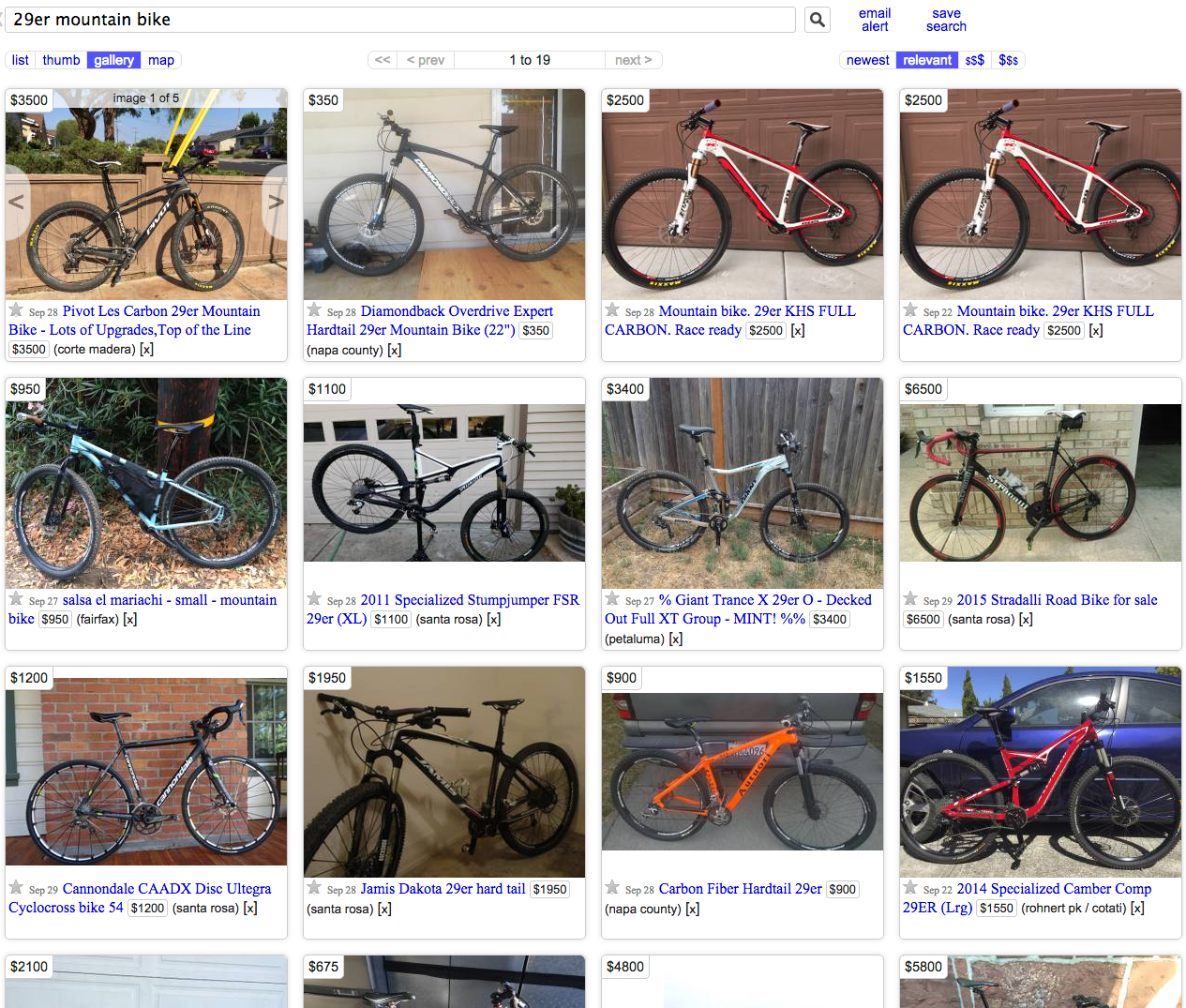
Here's 16 mountain bikes on Craig's List at an average price of $2485 - more than double the price of sailing.
Yachting is expensive but sailing really isn't. But even the world of 'yachting' has been skewed over the decades. In the 70's, Thomas Watson Jr., the CEO of the mighty corporate giant IBM, built himself a 'megayacht' of the era, which was by today's standards, a modest 67' named 'Palawan IV'. This was the kind of yacht that impressed everyone sailing around a harbor on their Sunfish, Flying Scot, Thistle or Rhodes 19. The truth is our whole perception of what's required to enjoy a few hours of sailing has been distorted, along with the growth of McMansions and SUVs, as the normal scale of our ever expanding living choices. The megayachts of today aren't 60-80' but more like 150-200', and often starter sailboats are thought of as small keelboats between 20 and 30 feet. Does any owner of a 150' megayacht have what anybody would call a true sailing 'adventure?' This shifted perception that may increase the dollar value of every sailboat sold but decrease the volume of boats sold and people participating.
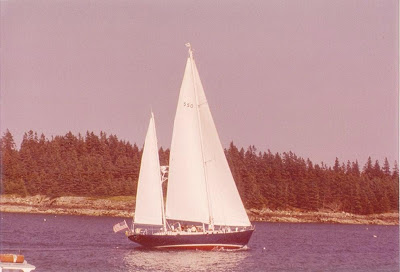
'Palawan IV' was very modest by today's standards of 'CEO yachts' but it took it's owner for adventures all over the world in safety and comfort.
Now, as boomers age, they're discovering the beauty of downsizing - smaller houses, smaller cars, and for many, smaller boats. And many new sailors are starting out, as always, on small boats. Like the 60s and 70s when thousands started sailing in Sunfish or Hobies or even a 'big' keelboat like a Ranger 23 a percentage of those will migrate up to big boats. Even Larry Ellison started sailing on a Lido 14 at Cal Sailing Club in Berkeley - a club you can still join today for $99 to sail all you want for three months or about $1/day if you sailed every day. After that he moved up to the endless billions he's subsequently spent on 'yachting'. Naturally those billions attract the media which ignores his humble beginnings and perpetuates the myth of sailing's stratospheric cost.
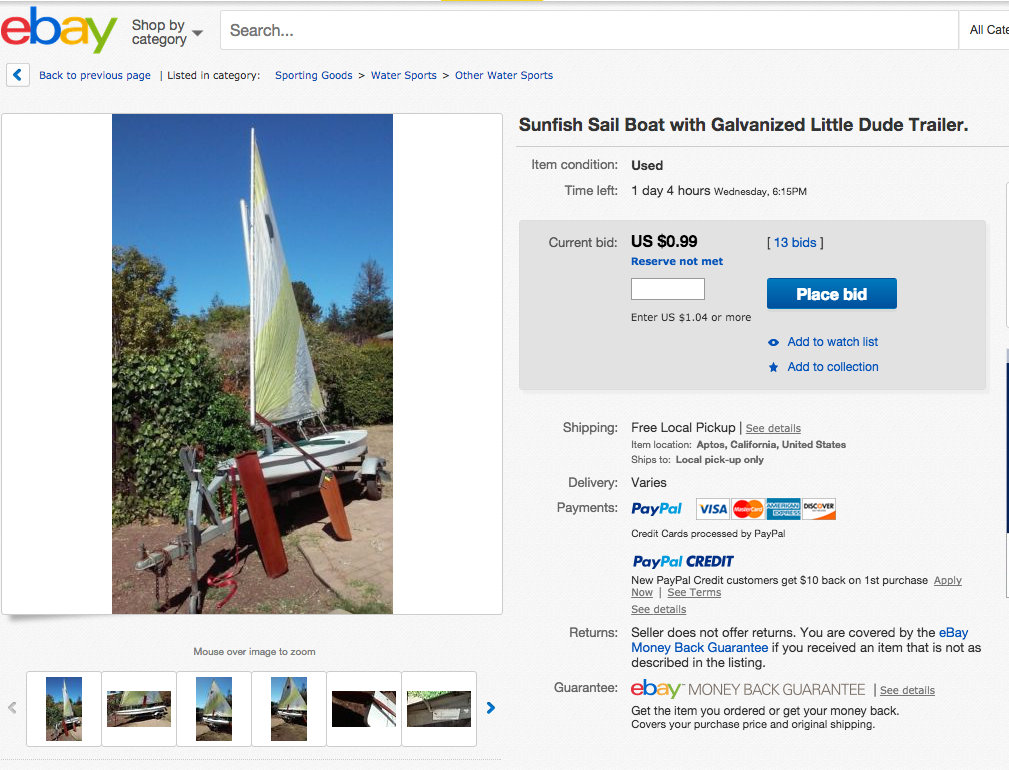
How about a Sunfish on EBay for 99 cents!
If we truly want sailing to grow we need to have faith in the attractions of sailing and be willing to present sailing at the level most people can fit into their lives. This means boats that fit in a garage, on a car top or small trailer, a boat that is inherently simple and inexpensive. Like water, sailors will seek their own level. The boats that existed in the 60s and 70s did this and many new sailing dinghies today do the same. The Hobie Adventure Island trimaran does it, the Bic O'pen and numerous other small sailing dinghies are updated with modern styling and innovation, but still affordable. And Craig's List is full of great used boat bargains from Flying Scots to Hobies to Sunfish. Even the Sea Snark, which started hundreds of thousands of people sailing, is still available brand new for just over a $1,000. There are endless stories like Ed Kelly's who started sailing with a Sea Snark he bought in the 70s for $88 and two Kool cigarette coupons and is now, years later, in his 7th year cruising with his wife Sue aboard their 38' catamaran.
Like sailing, driving can be very expensive - if you drive a Tesla or Mercedes. A baseball game can be outrageous if you sit in corporate owned box seats. But, like baseball, sailing has its 'bleachers', a place where millions can truly afford to go - often for less than a day in the bleachers of a baseball stadium. And today, unlike the 60s and 70s, there's a bigger variety of affordable options. Now there's the share economy with companies like Sailtime, Boatbound.co, Getmyboat.com or Boatsetter. There are commercial sailing schools, clubs charter operations where you join and rent by the week, day or afternoon. There's an almost endless supply of local, community sailing programs. And, of course, the endless selection of affordable small boats both new and used.
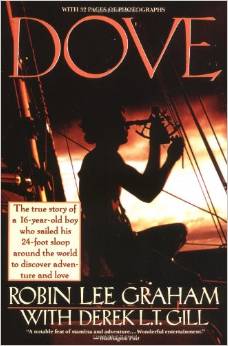
Robin Lee Graham was one of many small boat salors who inspired thousands when he left at age 16 to sail around the world on a 24 foot sloop.
Sailing is justifyably proud of its yachting traditions which prizes the skills and seamanship of bluewater voyagers or the tactical prowess of the elite racing world. But the visual and editorial drama of these attention grabbing aspects of sailing tend to overshadow the simple pleasures the vast majority of sailors get from smaller, less expensive and simpler boats.
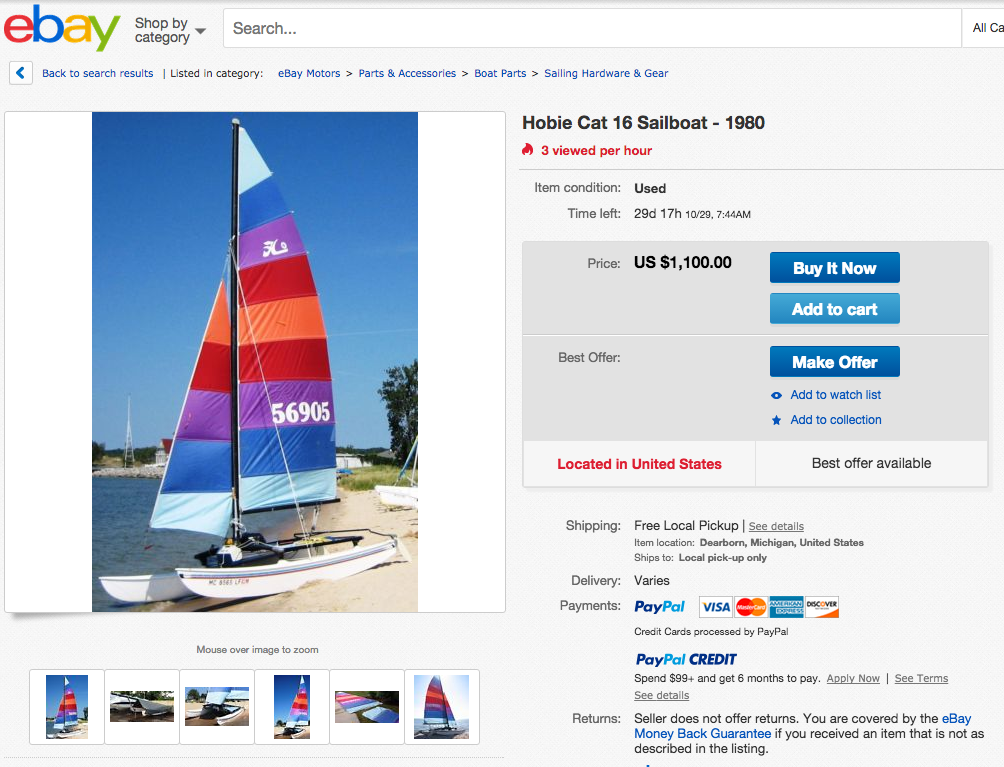
Pretty spiff Hobie for just $1100!
Another thing we 'misremember' about the pleasures and price of sailing in the past, there was a whole class of boats built in the 20'+ range which were actually built as 'racer/cruisers'. This includes boats such as the J/24, Santana 22, Cal 20 and Ranger 23. All of these boats sported interiors with cushions and young sailors would actually weekend cruise aboard these boats in the 70s. Many of these boats are available 'for a song' and, with a bit of elbow grease, could be happily taking adventurous people for weekend or longer cruises again. Here's a selection of small boats with the interiors of their past:
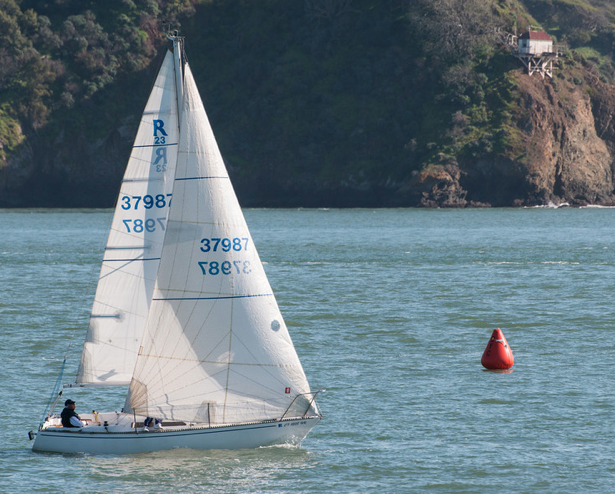
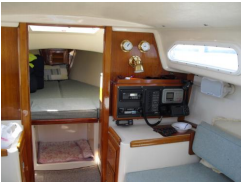
A Ranger 23 if a fantastic boat with a cruisable interior - many for sale $2500-3500.
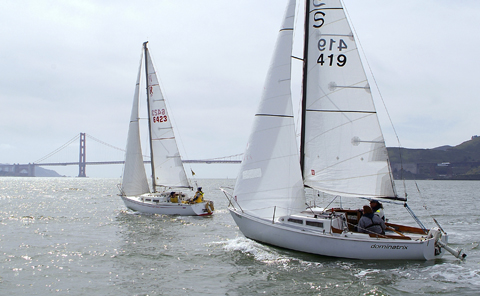
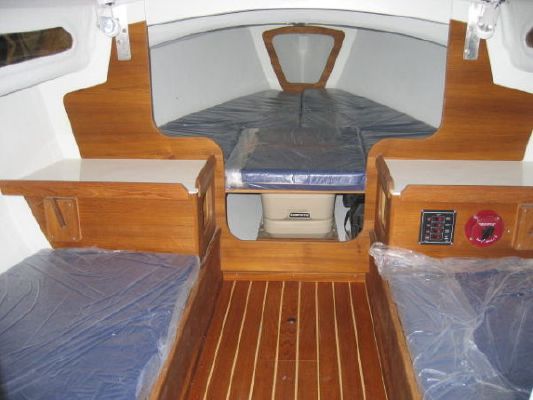
A Santana 22 is also a beautiful sailing boat wtih room for four good friends - many available for $1,000-3,000.
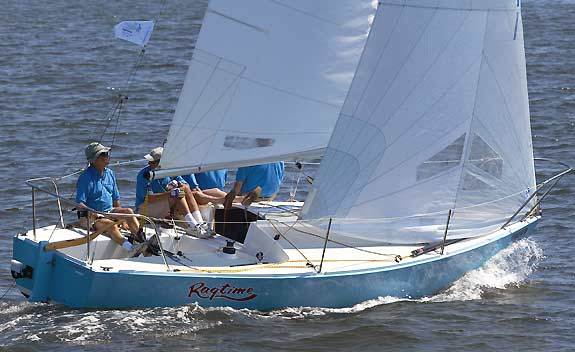
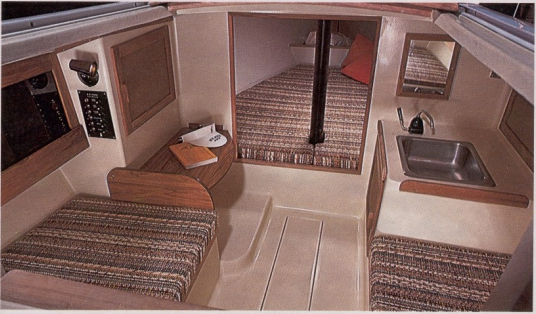
The J-24 is a classic and this early interior shot is what coaxed many to weekend cruise J-24s all over the place, find them for $2-5,000. And if you don't think this was fun you missed the party!
These are boats that started hundreds of thousands of people sailing many who've subsequently moved up to larger boats and many who've found a lifetime of sailing pleasure right aboard their first love. A huge number of these boats are avialable now at incredibly low prices and, with a little TLC, are ready for someone's next adventure. Regardless of how you want to start the price of entry into a lifetime of sailing is a barrier in perception only - the reality is just about anyone who wants to sail can find a way for less than their montly cable or cellphone bill. We'd love to see more of these boats brought back to life and treating some new owners to weekend sailing adventures. We started the 'Sailboat Rescue League' to help inspire and document these stories. If you bring one back to life let us know - we'd like to applaud your efforts.
The annual Summer Sailstice celebration was created for the whole sailing world to be made visible - small ship to tall ship, elite to the 'unknown sailor'. The invitation is for all the world's Sunfish, Hobies, Flying Scots, Ranger 23s and, yes, megayachts to go sailing/racing/cruising on the weekend closest to the summer solstice. When all sailors stand up and are counted, the world will discover the enormous variety of ways to enjoy sailing simply and affordably.
